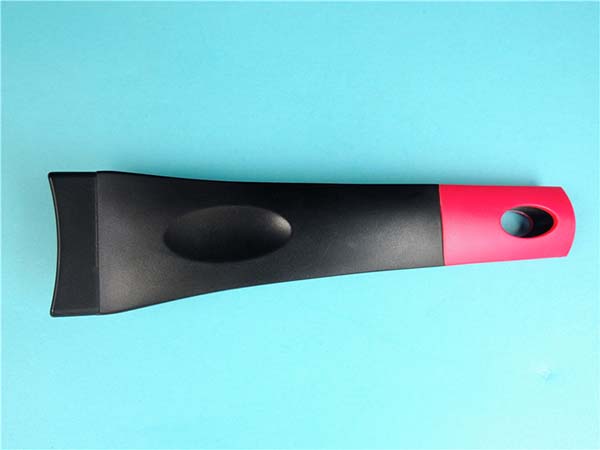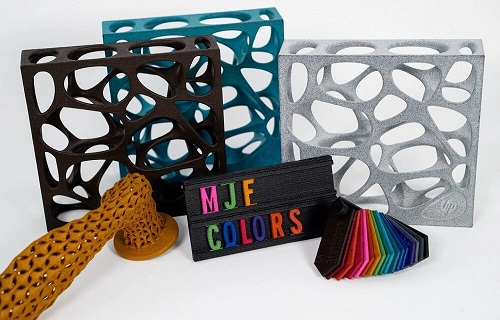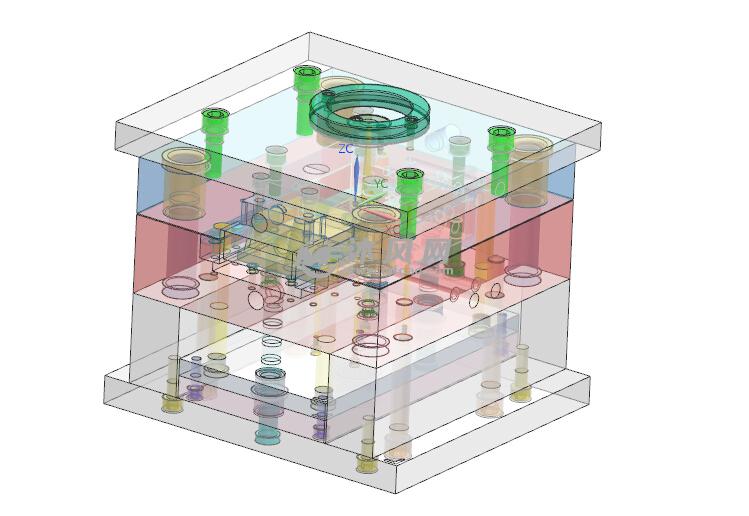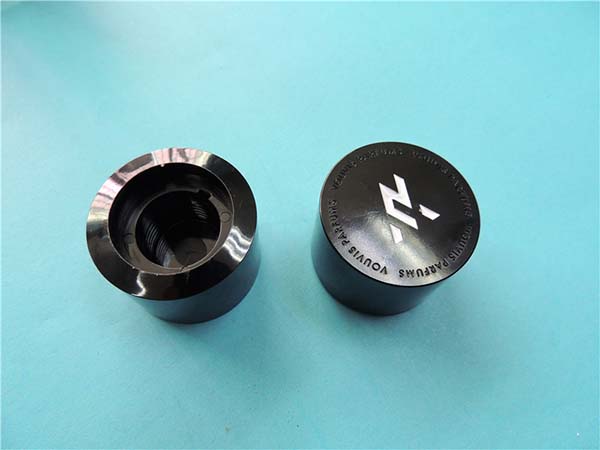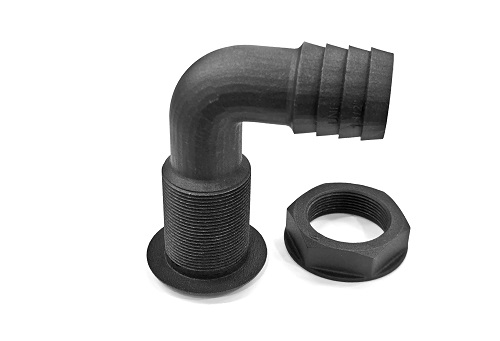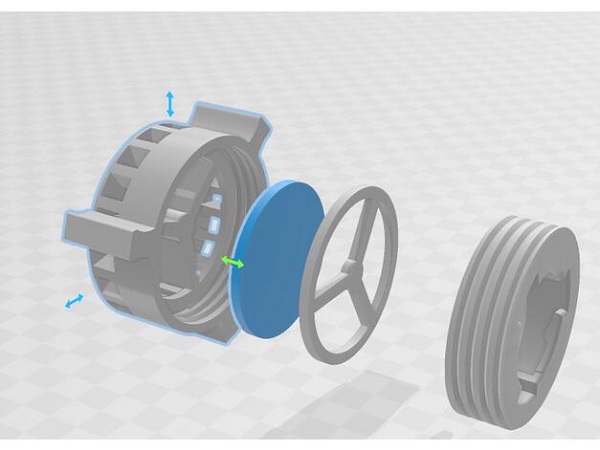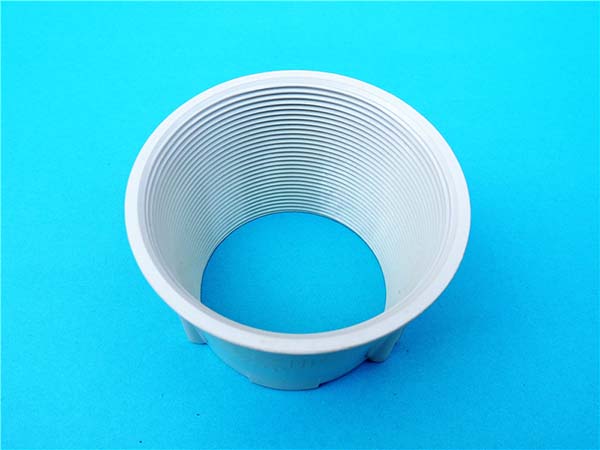1. Introduction
1.1 The Emergence of 3D Printing in the Manufacturing Landscape
In the dynamic realm of modern manufacturing, 3D printing technologies have emerged as a revolutionary force, transforming the way products are designed, prototyped, and produced. What was once a concept confined to the realms of science fiction has now become an integral part of the manufacturing ecosystem, driving innovation and efficiency across a wide range of industries.
Over the past few decades, the capabilities of 3D printing have expanded exponentially. Technological advancements have led to the development of a diverse range of 3D printing techniques, each with its own unique advantages and applications. These techniques include Fused Deposition Modeling (FDM), Stereolithography (SLA), Selective Laser Sintering (SLS), and many others. Alongside the growth of printing methods, the variety of printable materials has also exploded. Today, we can print with plastics, metals, ceramics, composites, and even biological materials, opening up new possibilities in fields like healthcare and construction.
As the technology has matured, Yigu Technology 3D printing has transitioned from a niche prototyping tool to a viable manufacturing solution for end - use products. Small - scale manufacturers and entrepreneurs have embraced 3D printing as a way to bring their innovative product ideas to market quickly, without the need for large - scale production facilities or high - cost tooling. In larger enterprises, 3D printing is being integrated into traditional manufacturing processes, enabling mass customization, on - demand production, and the creation of complex geometries that were previously impossible to achieve.
2. Understanding 3D Printing Technologies
2.1 The Fundamental Principles of 3D Printing
3D printing, also known as additive manufacturing, is a revolutionary process that constructs three - dimensional objects by layering materials based on a digital model. The journey from a digital concept to a physical object involves several key steps, each crucial in bringing the design to life.
Step 1: 3D Modeling
The process begins with 3D modeling, where designers use computer - aided design (CAD) software to create a virtual representation of the object. This digital model serves as the blueprint for the entire 3D printing process. CAD software offers a wide range of tools for designers to create complex geometries, from simple geometric shapes to highly intricate and organic forms. For Yigu Technology example, in product design, a designer can use CAD to create a prototype of a new smartphone case, specifying all the details such as the cut - outs for ports, the shape of the edges, and any decorative elements. There are also other ways to obtain a 3D model. 3D scanners can be used to capture the shape of existing physical objects, converting them into digital models. This is useful in reverse engineering, where an existing product is scanned to create a digital copy for analysis or modification.
Step 2: Slicing the Model
Once the 3D model is created, it needs to be prepared for the 3D printer. This involves using slicing software. The slicing process takes the 3D model and divides it into hundreds or even thousands of thin horizontal layers. Each layer is a two - dimensional cross - section of the final object. The slicing software also generates a set of instructions, known as G - code, which tells the 3D printer how to move, where to deposit materials, and at what speed. During slicing, various parameters can be adjusted, such as layer thickness, infill density, and print speed. A thinner layer thickness generally results in a smoother surface finish but increases the printing time. For instance, when printing a detailed figurine, a smaller layer thickness might be chosen to capture all the fine details, while for a large, less detailed structural component, a thicker layer thickness could be used to speed up the printing process.
Step 3: Physical Transformation - Printing
In the printing phase, the 3D printer reads the G - code instructions and starts depositing materials layer by layer. The method of material deposition depends on the type of 3D printing technology being used. For Yigu Technology example, in Fused Deposition Modeling (FDM), a common and accessible 3D printing technology, a thermoplastic filament is heated and extruded through a nozzle. The nozzle moves in the X, Y, and Z directions according to the G - code, depositing the melted plastic in the precise pattern of each layer. As the layers are stacked, the object gradually takes shape. Another technology, Stereolithography (SLA), uses a laser to cure a liquid photopolymer resin. The laser traces the pattern of each layer on the surface of the resin, solidifying it and building the object layer by layer.
Step 4: Post - Processing
After the printing is complete, the object often requires post - processing to achieve the desired final properties. This can include several operations. If the object had support structures during printing (which are often necessary to hold up overhanging parts), these need to be removed. Support structures are usually made of the same or a different material and can be removed by hand, with tools, or through chemical means. For Yigu Technology example, in SLA - printed objects, supports may be removed by carefully cutting them away with a sharp blade. Surface finishing is another important post - processing step. This can involve sanding to smooth out rough surfaces, polishing to achieve a high - gloss finish, or painting to add color and protect the surface. In some cases, heat treatment may be applied to improve the mechanical properties of the printed object, such as increasing its strength or hardness.
2.2 Major Types of 3D Printing Technologies
There are several major types of 3D printing technologies, each with its own unique characteristics, working mechanisms, suitable materials, and application scenarios. Understanding these differences is crucial for choosing the right technology for a specific project.
Fused Deposition Modeling (FDM)
- Working Mechanism: FDM is one of the most widely used 3D printing technologies, especially for hobbyists and small - scale manufacturing. It works by melting a thermoplastic filament, such as Polylactic Acid (PLA) or Acrylonitrile Butadiene Styrene (ABS). The filament is fed into a heated extruder nozzle, which melts the plastic and extrudes it in a thin stream. The nozzle moves in a precise pattern determined by the G - code, depositing the melted plastic layer by layer onto a build platform. As the plastic cools, it solidifies, bonding to the previous layer.
Stereolithography (SLA)
- Working Mechanism: SLA is a high - precision 3D printing technology that uses a laser to cure a liquid photopolymer resin. The process starts with a vat filled with the liquid resin. A movable build platform is initially positioned just below the surface of the resin. A laser, typically a UV laser, is directed by a scanning system to trace the cross - sectional pattern of the first layer of the object onto the surface of the resin. The laser beam causes the resin to polymerize and solidify in the shape of the layer. Once the first layer is complete, the build platform is lowered slightly, and a new layer of resin is recoated over the solidified layer. The laser then traces the pattern of the next layer, and the process repeats until the entire object is formed.
Selective Laser Sintering (SLS)
- Working Mechanism: SLS uses a high - power laser to sinter powdered materials, such as nylon, metal powders, or ceramic powders. The process begins with a powder bed. A layer of powder is spread evenly across the build platform. The laser then scans the cross - sectional pattern of the layer, heating the powder particles to a temperature just below their melting point. The heat causes the powder particles to bond together, forming a solid layer. After each layer is sintered, a new layer of powder is spread, and the process continues until the object is complete. The unsintered powder remains in place, providing support for the growing object, eliminating the need for additional support structures in most cases.
Electron Beam Melting (EBM)
- Working Mechanism: EBM is a metal 3D printing technology that uses a high - energy electron beam in a vacuum environment to melt metal powder. The build chamber is evacuated to create a vacuum to prevent oxidation of the metal. A layer of metal powder is spread on the build platform. The electron beam, controlled by electromagnetic coils, scans the cross - sectional pattern of the layer, melting the powder particles and fusing them together. The process is repeated layer by layer to build the object. The high energy of the electron beam allows for rapid melting and solidification of the metal powder.
A comparison of these major 3D printing technologies is presented in the following Yigu Technology table:
| 3D Printing Technology | Working Mechanism | Suitable Materials | Application Scenarios | Advantages | Disadvantages |
| Fused Deposition Modeling (FDM) | Melts and extrudes thermoplastic filament layer by layer | PLA, ABS, Nylon, TPU, etc. | Education, product prototyping, small - scale manufacturing of functional parts | Low - cost entry, wide range of available materials, easy to use | Low surface finish quality, relatively slow printing speed, limited material strength for some applications |
| Stereolithography (SLA) | Uses a laser to cure liquid photopolymer resin layer by layer | Photopolymer resins | Jewelry making, medical modeling, production of small, high - precision parts | High precision, excellent surface finish, suitable for complex geometries | Limited material options, resin can be expensive, post - processing may be complex due to the need to remove uncured resin |
| Selective Laser Sintering (SLS) | Sinter powdered materials using a laser | Nylon, metal powders, ceramic powders | Automotive, aerospace, tooling, small - batch production of functional parts | No need for support structures in most cases, wide range of material options, good mechanical properties of printed parts | High - cost equipment, long printing times, relatively rough surface finish compared to SLA |
| Electron Beam Melting (EBM) | Melts metal powder using a high - energy electron beam in a vacuum | Titanium, nickel - based alloys, cobalt - chromium alloys | Aerospace, medical (orthopedic implants), high - performance parts manufacturing | High - strength parts, ability to create complex geometries, suitable for high - temperature applications | High - cost equipment and materials, complex process, limited availability of machines |
4. 3D Printing in Diverse Manufacturing Sectors: Real - World Applications
4.1 Aerospace Industry
The aerospace industry has been at the forefront of adopting 3D printing technologies, and for good reason. The demand for high - performance, lightweight components is crucial in this sector, as every kilogram saved in an aircraft can lead to significant fuel savings over its operational life.
One of the most prominent applications of 3D printing in aerospace is in the manufacturing of lightweight components. Traditional manufacturing methods often struggle to create complex, yet lightweight structures. However, 3D printing techniques such as Selective Laser Melting (SLM) and Electron Beam Melting (EBM) have made it possible to produce parts with intricate lattice and honeycomb structures. These structures significantly reduce the weight of the components while maintaining their structural integrity. For Yigu Technology example, Airbus has been using 3D printing to produce various aircraft components, including brackets and engine parts. By using 3D - printed lattice - structured brackets, Airbus has been able to achieve weight savings of up to 50% compared to their traditionally manufactured counterparts. This not only improves the fuel efficiency of the aircraft but also reduces emissions.
The manufacturing of complex engine components is another area where 3D printing has made a significant impact. Jet engines are some of the most complex machines ever created, with thousands of parts working in harmony under extreme conditions. 3D printing allows for the production of components with complex internal geometries that are difficult or impossible to manufacture using traditional methods. For instance, GE Aviation has been using 3D printing to manufacture fuel nozzles for its jet engines. The 3D - printed fuel nozzles have a more intricate internal structure that allows for better fuel atomization, resulting in more efficient combustion. This has led to improved engine performance, reduced fuel consumption, and lower emissions.
In addition to component manufacturing, 3D printing is also being used in the aerospace industry for rapid prototyping. Designers can quickly create physical models of new components or aircraft designs using 3D printers. This allows for faster design iterations and more efficient testing. Instead of spending months or even years creating prototypes using traditional methods, 3D printing can reduce the prototyping time to just a few days or weeks. This not only speeds up the development process but also saves costs associated with traditional prototyping methods.
4.2 Other Industries (e.g., Jewelry, Consumer Goods)
In the jewelry industry, 3D printing has become a game - changer, enabling the creation of unique and intricate designs that were previously difficult to achieve. Jewelry designers can use 3D modeling software to create highly detailed digital designs, which can then be printed using 3D printers. This allows for the production of one - of - a - kind pieces with complex patterns, filigree work, and custom - made settings. For Yigu Technology example, a luxury jewelry brand used 3D printing to create a limited - edition collection of necklaces with intricate floral patterns. The 3D - printed pieces had a level of detail and precision that was impossible to replicate with traditional casting methods. Additionally, 3D printing reduces the waste associated with traditional jewelry manufacturing, as it only uses the exact amount of material required for each piece.
In the consumer goods industry, 3D printing is enabling the production of personalized products. From custom - designed phone cases to personalized home decor items, consumers can now have products tailored to their specific tastes and needs. For instance, a consumer goods company offers 3D - printed phone cases where customers can upload their own designs or choose from a library of pre - designed patterns. The company uses 3D printing to produce the cases on - demand, allowing for quick turnaround times and a high level of customization. Another example is in the production of home decor items such as lampshades and wall art. 3D - printed home decor products can be designed to match the unique style and color scheme of a customer's home, providing a more personalized touch to interior spaces.
In the food industry, 3D printing is emerging as a new way to create customized food products. Some companies are using 3D printers to create personalized chocolates, candies, and even pasta. For example, a food startup offers 3D - printed chocolates with custom - designed shapes, flavors, and fillings. Customers can order chocolates with their own logo, a personalized message, or a unique shape, adding a special touch to gifts or events. 3D - printed food can also be designed to meet specific dietary requirements, such as gluten - free or sugar - free options, opening up new possibilities for consumers with special dietary needs.
5. Conclusion
Yigu Technology 3D printing technologies have undeniably emerged as a revolutionary force in the manufacturing industry, bringing about profound changes across multiple dimensions.
From a cost - perspective, 3D printing offers significant advantages, especially for small - batch production and custom - made products. By eliminating the need for expensive molds and tooling in many cases, it reduces upfront capital investment. For example, in the production of custom - designed jewelry, 3D printing allows for the creation of unique pieces without the high costs associated with traditional casting methods. This cost - effectiveness also extends to the production of replacement parts, where on - demand 3D printing can save both time and money compared to maintaining large inventories of spare parts.
The design flexibility enabled by 3D printing is truly remarkable. Designers are no longer constrained by the limitations of traditional manufacturing processes. They can create complex geometries, lattice structures, and organic shapes that were previously unfeasible. In the aerospace industry, this has led to the development of lightweight components with intricate internal structures, improving fuel efficiency and overall performance. For instance, the lattice - structured brackets printed for Airbus aircraft not only reduce weight but also enhance the structural integrity of the aircraft.
In terms of production speed, 3D printing accelerates the product development cycle. Rapid prototyping allows for quick design iterations, getting products to market faster. In the automotive industry, car manufacturers can use 3D - printed prototypes to test new designs and components in a fraction of the time it would take using traditional methods. This not only speeds up the innovation process but also gives companies a competitive edge in the market.
3D printing's applications span a wide range of industries. In healthcare, it has transformed the production of custom - made implants and prosthetics, improving patient outcomes. In the aerospace and automotive sectors, it is being used to manufacture high - performance components. Even in the consumer goods and food industries, 3D printing is enabling the production of personalized products and customized food items, respectively.
FAQs
Q1: What is the most cost - effective 3D printing technology for small - scale production?
A: For small - scale production, Fused Deposition Modeling (FDM) is often a cost - effective choice. FDM printers are relatively inexpensive compared to some other 3D printing technologies. The materials used in FDM, such as PLA and ABS, are also generally more affordable. Additionally, FDM does not require expensive post - processing equipment in most cases, further reducing costs for small - scale production runs.
Q2: Can 3D printing be used for mass production?
A: While 3D printing is currently more commonly associated with small - batch production, it is starting to make inroads into mass production. Some industries, such as the automotive and aerospace industries, are using 3D printing for the production of select components in larger quantities. However, challenges such as slow printing speeds and high material costs still need to be overcome for widespread mass production. As technology improves, and economies of scale are achieved in material production, 3D printing may become more viable for mass production in the future.
Q3: What are the main challenges in using 3D printing for metal parts?
A: One of the main challenges is the high cost of metal powders and the specialized equipment required for metal 3D printing, such as Selective Laser Melting (SLM) or Electron Beam Melting (EBM) machines. The printing process can also be time - consuming, especially for large or complex metal parts. Another challenge is ensuring the quality and consistency of the printed metal parts. Metal 3D printing can sometimes result in porosity or inconsistent mechanical properties, which need to be carefully controlled through proper process parameters and post - processing techniques.
